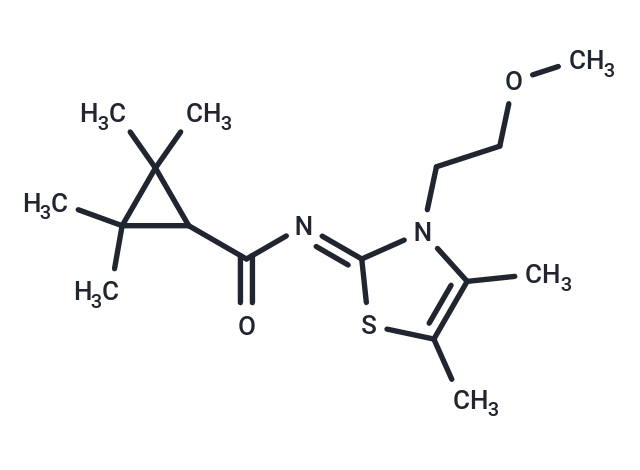Shopping Cart
- Remove All
 Your shopping cart is currently empty
Your shopping cart is currently empty

A-836339 acts as a potent cannabinoid receptor full agonist which has a higher affinity for the peripheral CB2 receptor (Ki = 0.64 nM) over the central CB1 receptor (Ki = 270 nM). It displays analgesic, anti-inflammatory, and anti-hyperalgesic effects in mice.

| Pack Size | Price | Availability | Quantity |
|---|---|---|---|
| 2 mg | $41 | In Stock | |
| 5 mg | $93 | In Stock | |
| 10 mg | $167 | In Stock | |
| 25 mg | $281 | In Stock | |
| 50 mg | $413 | In Stock | |
| 100 mg | $587 | In Stock | |
| 200 mg | $793 | In Stock | |
| 1 mL x 10 mM (in DMSO) | $86 | In Stock |
| Description | A-836339 acts as a potent cannabinoid receptor full agonist which has a higher affinity for the peripheral CB2 receptor (Ki = 0.64 nM) over the central CB1 receptor (Ki = 270 nM). It displays analgesic, anti-inflammatory, and anti-hyperalgesic effects in |
| In vivo | A-836339 was characterized extensively in various animal pain models. In the complete Freund's adjuvant model of inflammatory pain, A-836339 exhibits a potent CB(2) receptor-mediated antihyperalgesic effect that is independent of CB(1) or mu-opioid receptors. A-836339 has also demonstrated efficacies in the chronic constrain injury (CCI) model of neuropathic pain, skin incision, and capsaicin-induced secondary mechanical hyperalgesia models. Furthermore, no tolerance was developed in the CCI model after subchronic treatment with A-836339 for 5 days[1]. |
| Animal Research | The plantar aspect of the rat left hind paw was exposed through a hole in a sterile plastic drape, and a 1-cm longitudinal incision was made through the skin and fascia, starting 0.5 cm from the proximal edge of the heel and extending toward the toes. The plantaris muscle was elevated and incised longitudinally, leaving the muscle origin and insertion points intact. After homeostasis by application of gentle pressure, the skin was apposed with two mattress sutures using 5-0 nylon. Animals were then allowed to recover for 2 or 24 h after surgery, at which time mechanical allodynia was assessed.To test drug effects, rats were first acclimated for 20 min in inverted individual plastic containers (20*12.5*20 cm) on top of a suspended wire mesh grid, and A-836339 was injected intraperitoneally 30 min before testing for mechanical allodynia using calibrated von Frey filaments . von Frey filaments were presented perpendicularly to the plantar surface of the selected hind paw and then held in this position for approximately 8 s, with enough force to cause a slight bend of the filament. Positive responses included an abrupt withdrawal of the hind paw from the stimulus or flinching behavior immediately after removal of the stimulus. A 50% withdrawal threshold was determined using an up-down procedure[1]. |
| Molecular Weight | 310.45 |
| Formula | C16H26N2O2S |
| Cas No. | 959746-77-1 |
| Smiles | COCCn1c(C)c(C)s\c1=N/C(=O)C1C(C)(C)C1(C)C |
| Relative Density. | 1.14 g/cm3 (Predicted) |
| Storage | Powder: -20°C for 3 years | In solvent: -80°C for 1 year | Shipping with blue ice. | |||||||||||||||||||||||||
| Solubility Information | DMSO: 12 mg/mL (38.65 mM), Sonication is recommended. | |||||||||||||||||||||||||
Solution Preparation Table | ||||||||||||||||||||||||||
DMSO
| ||||||||||||||||||||||||||

Copyright © 2015-2025 TargetMol Chemicals Inc. All Rights Reserved.